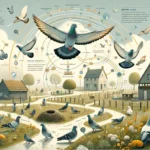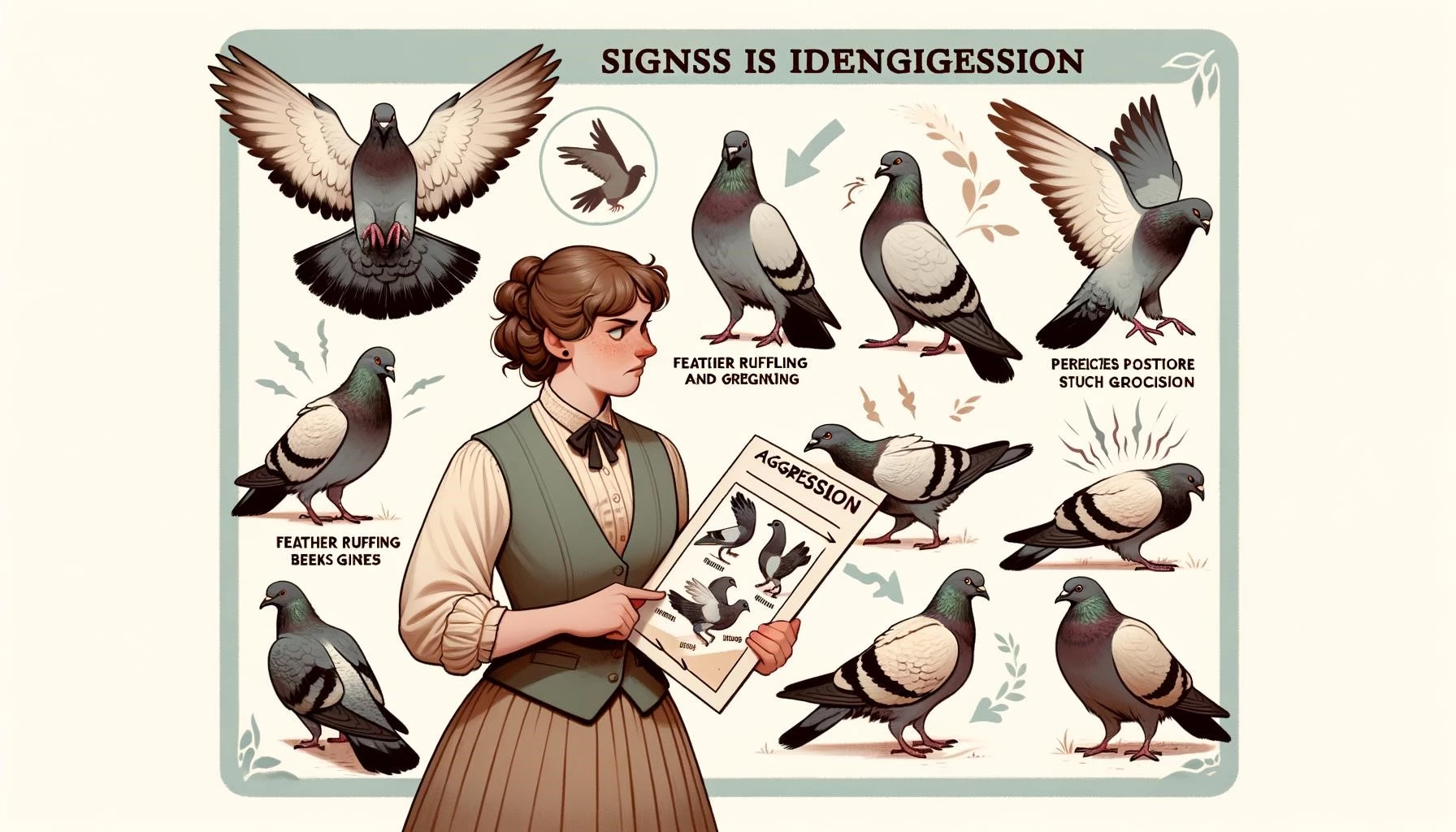Pigeons are often seen as peaceful and harmless birds, but they are not immune to aggression. Like other animals, pigeons can exhibit aggressive behavior, especially in certain situations or circumstances. Understanding the causes and manifestations of pigeon aggression can help us coexist peacefully with these birds and minimize any potential conflicts.
Key Takeaways
- Pigeons can display aggressive behavior, especially in situations involving competition for food, mates, or nesting sites.
- Pigeon aggression can manifest as physical aggression, such as pecking or attacking other pigeons, or as territorial aggression, where pigeons defend their nesting or feeding areas.
- Factors like overcrowding, limited resources, and hormonal changes can contribute to increased aggression in pigeons.
Causes of Pigeon Aggression
There are several factors that can contribute to aggressive behavior in pigeons. Understanding these causes can provide insights into how to manage and reduce aggression in pigeon populations.
Competition for Resources
One of the primary causes of aggression in pigeons is competition for resources such as food, mates, and nesting sites. Pigeons are social animals that form large flocks, and when resources become limited, aggression can arise as birds compete for access. This can lead to physical aggression, with pigeons pecking and attacking each other to assert dominance and secure resources.
Territoriality
Pigeons are territorial creatures, and they will vigorously defend their nesting or feeding areas from intruders. When pigeons perceive a threat to their territory, they may display aggressive behaviors to protect it. This can include chasing away other pigeons or engaging in physical confrontations.
Hormonal Changes
Like many animals, pigeons experience hormonal changes during breeding seasons. These hormonal fluctuations can increase aggression levels in both males and females as they compete for mates and nesting sites. During this time, pigeons may display more territorial and aggressive behaviors compared to other times of the year.
Manifestations of Pigeon Aggression
Pigeon aggression can manifest in various ways, from physical attacks on other pigeons to territorial displays. Understanding these manifestations can help differentiate between normal pigeon behavior and aggressive tendencies.
Physical Aggression
Physical aggression is one of the most apparent and visible forms of pigeon aggression. It involves pecking, pushing, or attacking other birds to establish dominance or defend resources. Physical aggression can result in injuries, such as wounds or feather damage, among pigeons involved in conflicts.
Territorial Aggression
Territorial aggression in pigeons typically occurs when birds defend their chosen nesting or feeding areas. They may engage in displays of dominance, such as puffing up their chest, cooing loudly, or flapping their wings aggressively to intimidate intruders. Territorial aggression aims to establish dominance and maintain control over essential resources.
Overcrowding and Flock Aggression
In situations where pigeons are overcrowded or where there is a high concentration of birds, flock aggression can occur. Overcrowding can lead to increased competition for limited resources, triggering aggressive behaviors among pigeons. This kind of aggression can result in large-scale conflicts and disrupt the overall dynamics of the pigeon flock.
Managing Pigeon Aggression
It is essential to manage pigeon aggression to ensure a harmonious coexistence between pigeons and humans. Here are a few strategies to mitigate aggression and promote peaceful interactions:
Provide Adequate Resources
Ensuring an ample supply of food and water can help reduce competition and aggression among pigeons. By providing enough resources, you can minimize the need for pigeons to fight over limited supplies and alleviate the associated aggression.
Control Population Density
Managing pigeon populations through humane and ethical methods is crucial to prevent overcrowding, which can contribute to aggression. Techniques such as birth control measures or implementing humane deterrents can help control pigeon populations and reduce aggression caused by limited resources.
Create Pigeon-Friendly Spaces
Designing pigeon-friendly spaces can provide pigeons with suitable nesting and roosting sites, reducing their need to compete for territory. By accommodating their natural behaviors and needs, you can minimize aggression and create a more peaceful environment for both pigeons and humans.
Seek Professional Assistance
If pigeon aggression becomes a persistent problem or poses a threat to human safety, it may be necessary to seek professional assistance. Wildlife experts, bird control specialists, or local animal control agencies can provide guidance and implement suitable measures to manage aggression and mitigate conflicts.
In conclusion, while pigeons are generally peaceful creatures, they are not exempt from displaying aggressive behavior. Understanding the causes and manifestations of pigeon aggression can help us manage and coexist peacefully with these birds. By providing adequate resources, controlling population density, creating pigeon-friendly spaces, and seeking professional assistance when needed, we can reduce aggression and promote a harmonious environment for both pigeons and humans.









